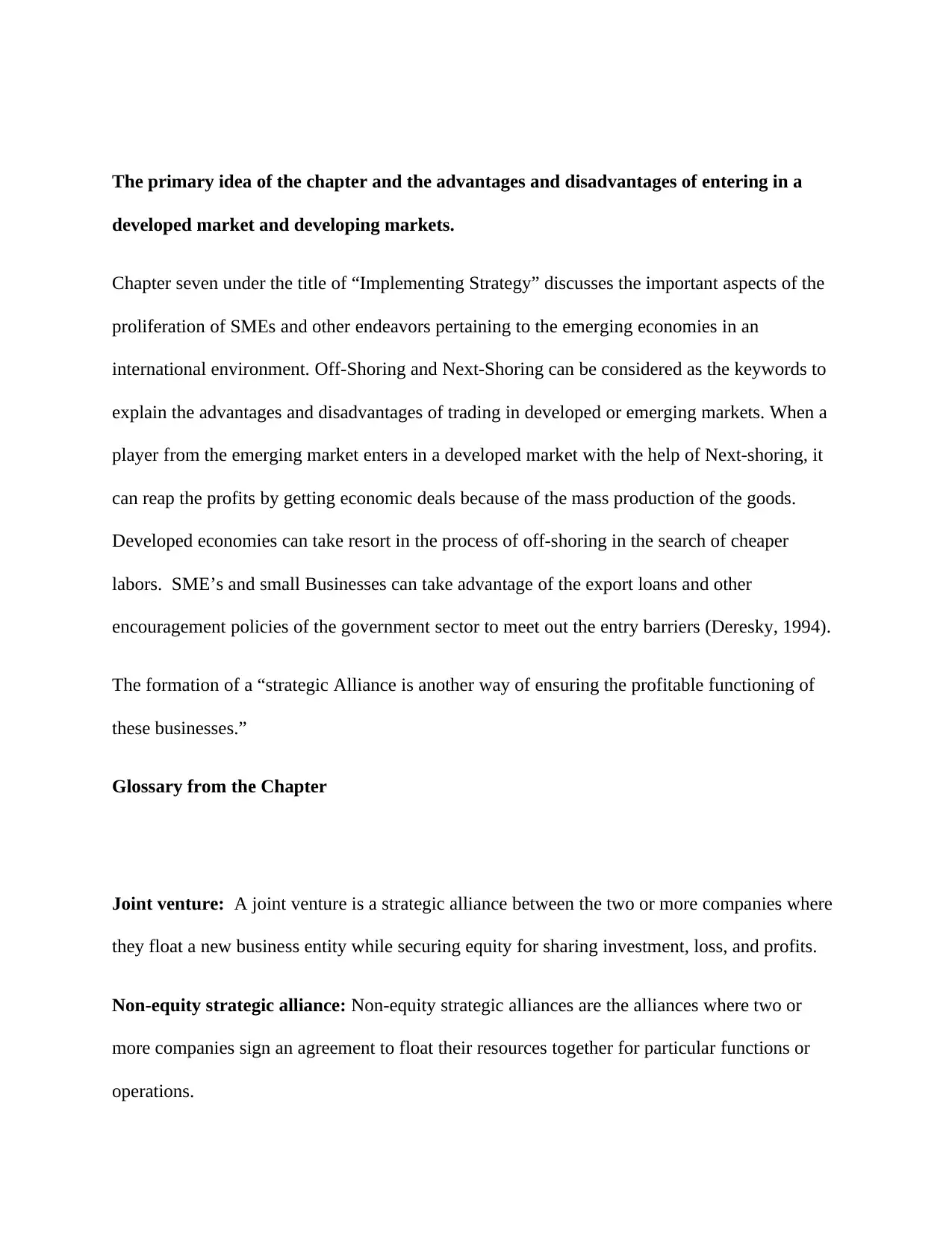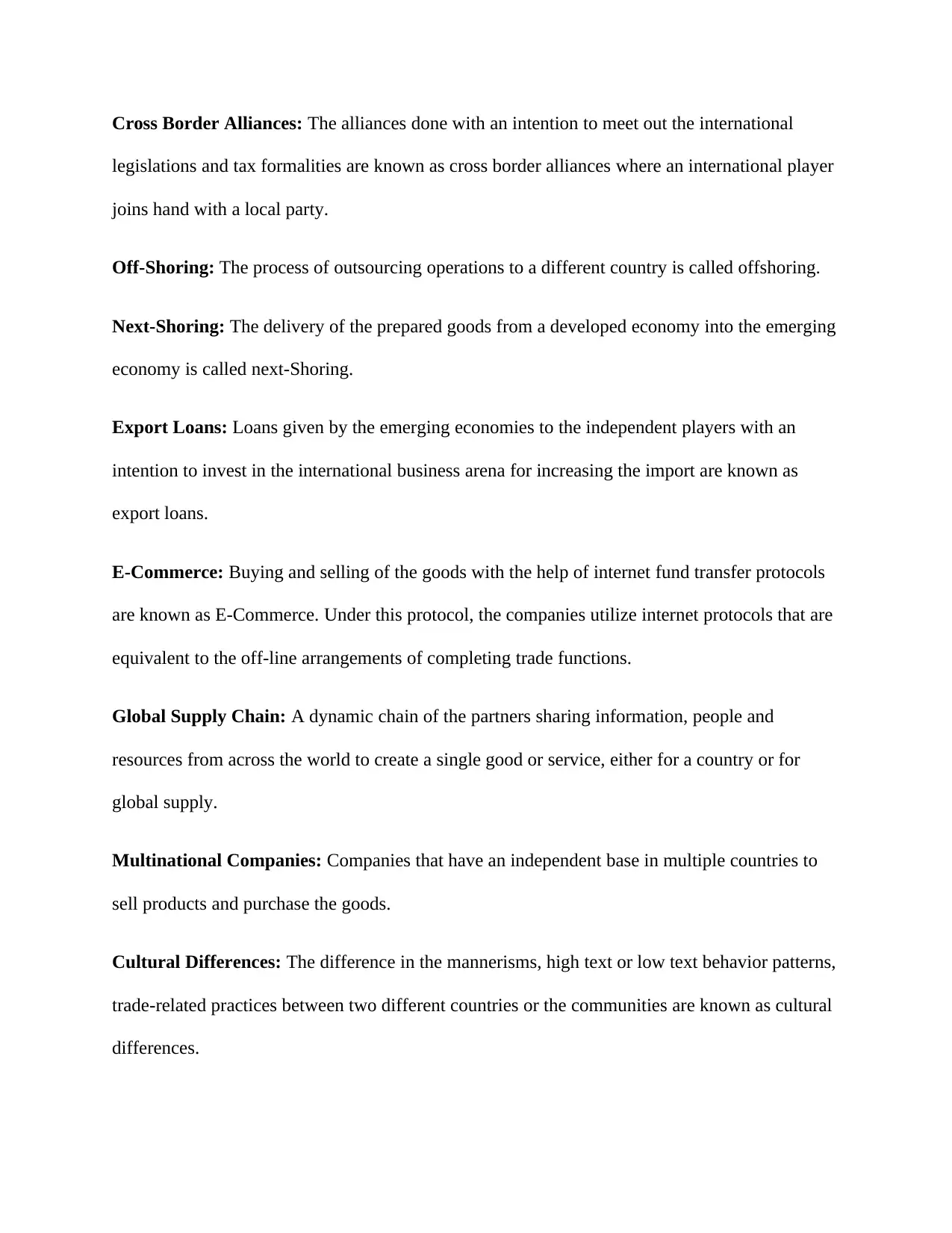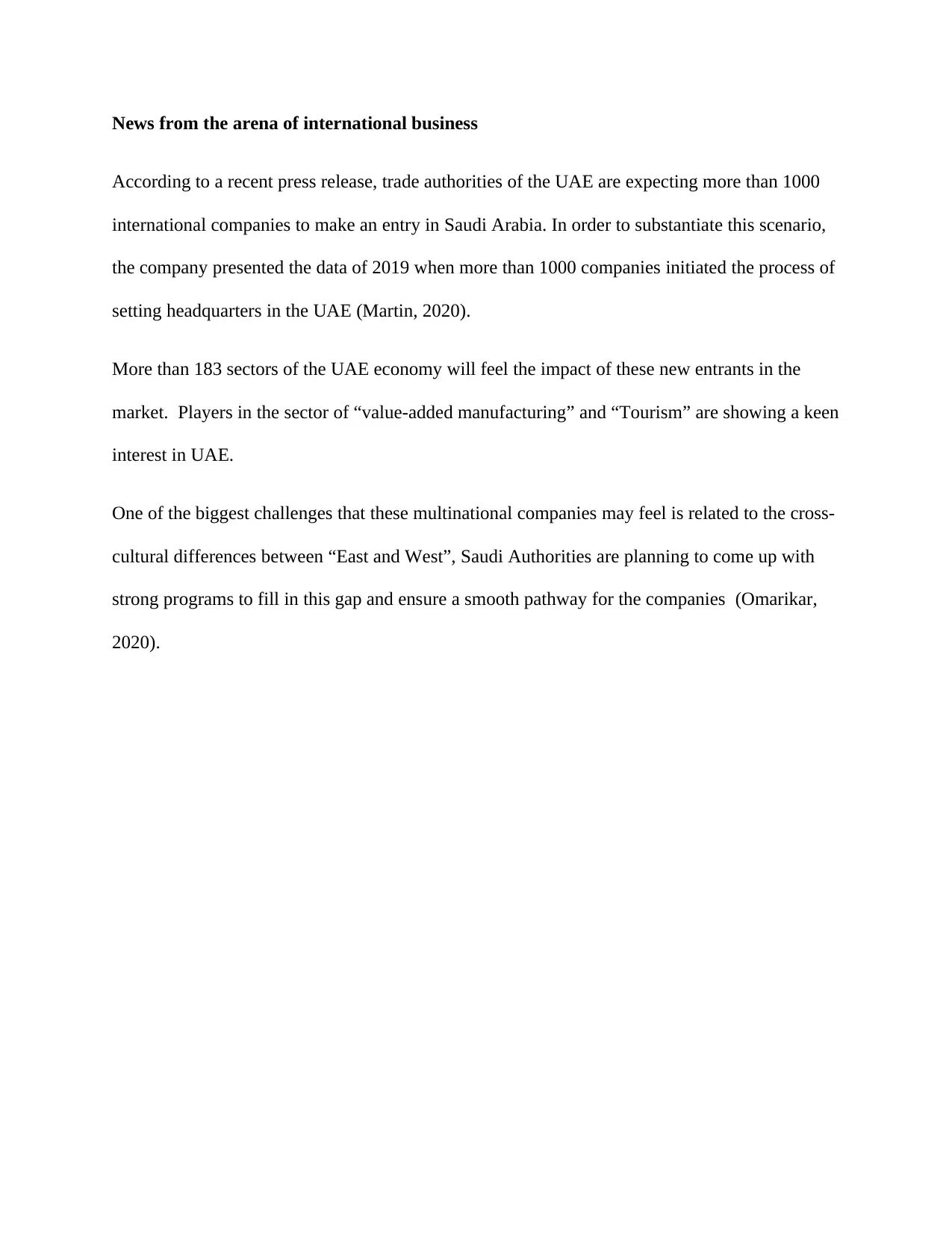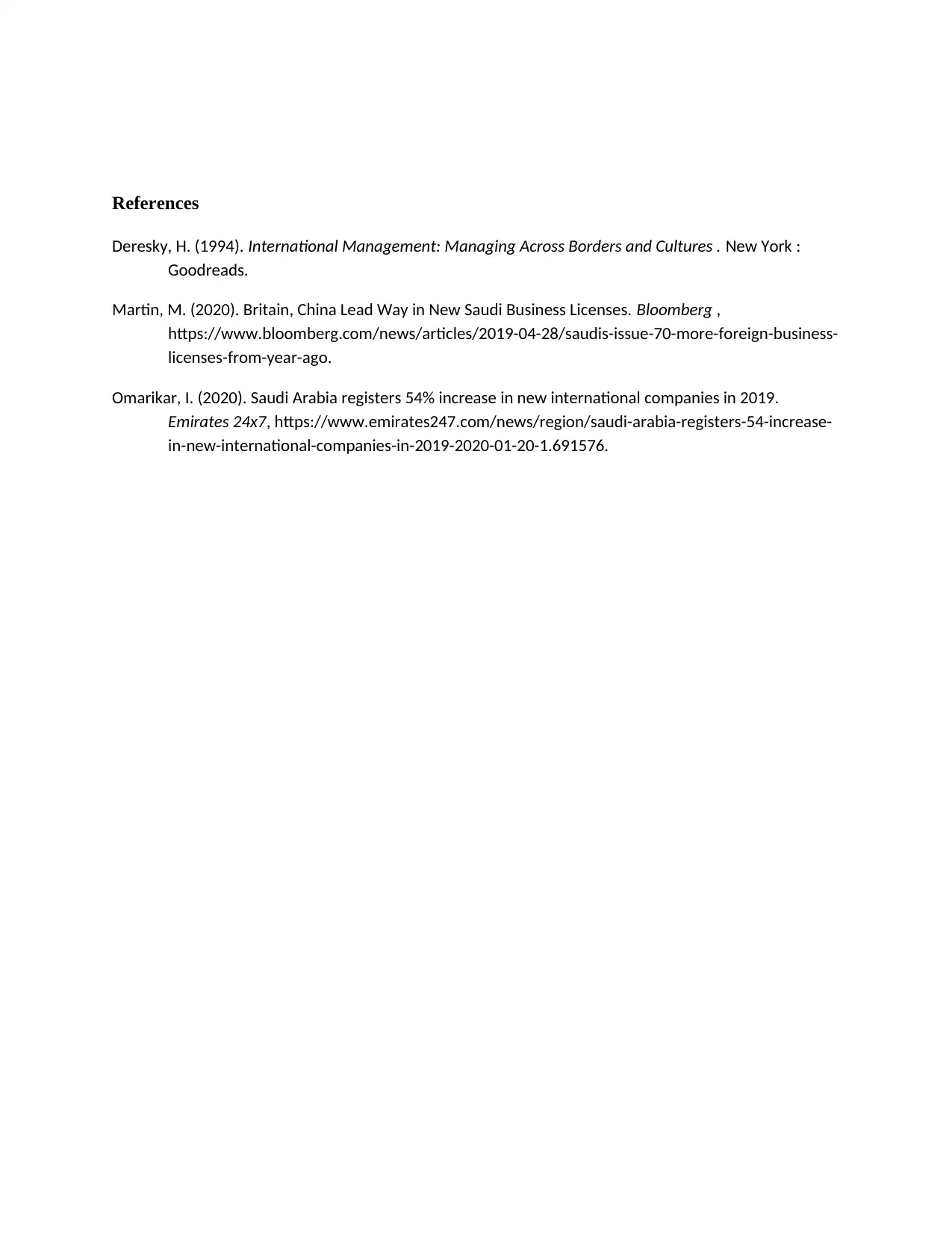Implementing Strategy: Advantages and Disadvantages of Market Entry
VerifiedAdded on 2022/08/09
|5
|723
|89
Report
AI Summary
This report examines market entry strategies in international business, focusing on the advantages and disadvantages of entering developed and emerging markets. It explores key concepts such as offshoring, next-shoring, strategic alliances, export loans, and e-commerce, along with the roles of SMEs and multinational companies. The report includes a glossary of terms and references a recent press release discussing the influx of international companies into Saudi Arabia, highlighting the potential challenges related to cross-cultural differences. The analysis considers the impact of these market entries on various sectors, such as value-added manufacturing and tourism, and discusses the initiatives planned to facilitate a smooth transition for these companies. The report utilizes references from academic literature and business news sources to support its findings and provide a comprehensive overview of the subject.
1 out of 5








![[object Object]](/_next/static/media/star-bottom.7253800d.svg)